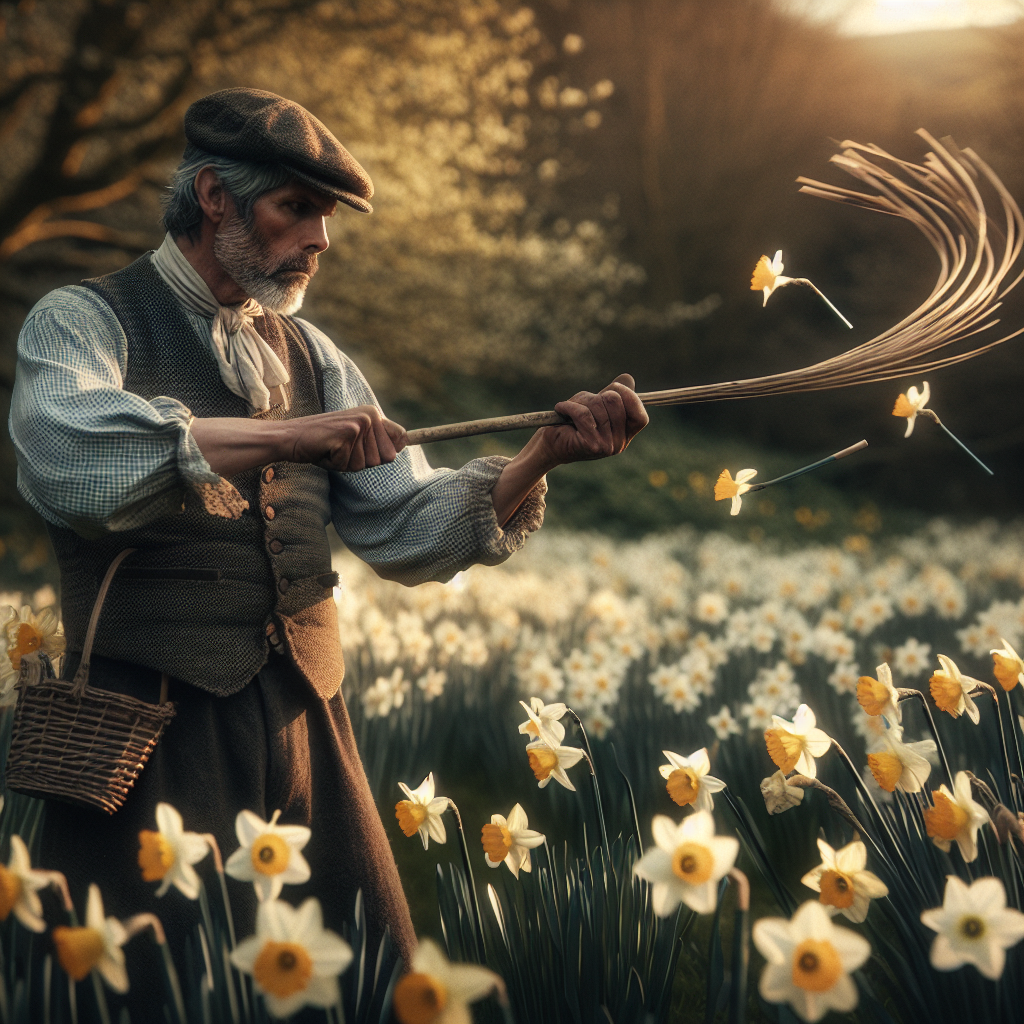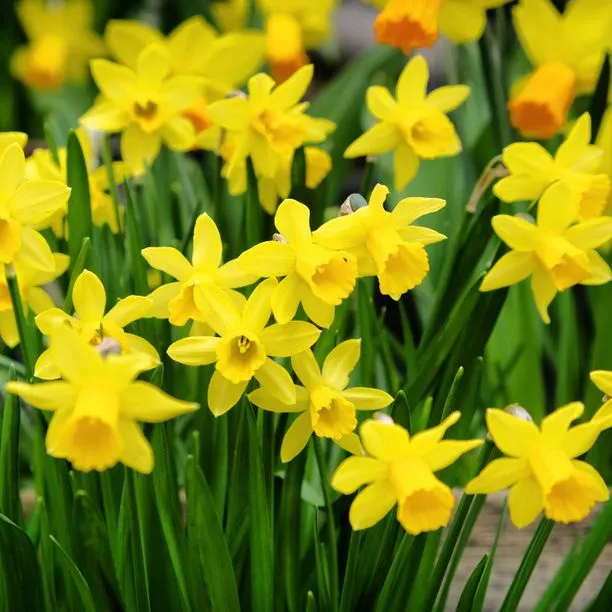Daffodils and Narcissi are undoubtedly among our most cherished and adored spring flowers, and they form a large part of our collection of flowering bulbs.
The cheery flashes of bright canary yellow along our roadsides and verges heralds the start of spring and tempts us with summery thoughts of the sunshine to come.
Deadheading is the process of removing the fading flower before the seed pod develops, thus preventing the plant from spending valuable energy on making seeds.
This means more energy goes back down into the bulb for next year’s display, and for producing bulblets that will mature into flowering plants in 2 – 3 years.
Remove the dead flower and the top inch of stalk. Leave the rest of the plant to photosynthesise as it will feed itself as it dies back.
When do I deadhead Daffodils?
As soon as the flowers fade and lose their colour. If they have turned brown, they are definitely ready!
If you do not deadhead, nothing bad will happen, but you may find that your daffodils don’t flower so impressively every year; some years will be lacklustre. Deadheading also tidies them up so you don’t have to look at the rather unattractive and bedraggled appearance of the faded, browning bloom.
On smaller areas in beds and containers, it’s easy enough to go round with secateurs and snip the old flowers off, or simply pinching them out between finger and thumb or a quick snip with secateurs.
But if you are managing a field of them, that takes too long. The most enjoyable way is to get an appropriately flexible, whippy stick, birch or hazel is great, and sweep the fading flowers off like you are playing golf with them. Or perhaps punishing that dreadful person who did those awful things to you after you treated them so well: it’s your therapy, we don’t judge.
With a bit of practice, and the right stick, you can decapitate several clumps at once.

When deadheading your daffodils this way, remember that you are only trying to remove the flower head, you want to leave the rest of the plant intact.
The foliage should be left intact because, like all bulbs, daffodils and narcissi need to let their foliage die back naturally so that all the energy can go back into the bulb and be stored there for next year, ready to make more beautiful blooms.
Interestingly, the stalk of the plant photosynthesises as much as a leaf, so don’t cut it out at the base.
After deadheading is also a great time to give them a feed with a general purpose fertiliser such as bone meal or growmore.
And now the age-old question…what to do with all the unsightly browning leaves as they die off?
Some people like to tidy them by tying them in a knot, or binding them with twine, but this is not good for the plant’s recovery as it reduces photosynthesis.
The most simple and low maintenance solution is to draw attention away from them with other closely planted perennials or shrubs that will hide the die back, and let them slowly get on with their business in peace!


What do I have to do to make ‘blind’ daffodil bulbs flower next year?
If you have marked where the clumps of blind daffodils are, this is a good time to lift and replant them. They will be blind either because they are overcrowded or because they are undernourished. So lift the clumps, separate the bulbs and replant about 2-3 inches apart and as deep as twice their height in soil to which you have added plenty of rotted organic matter and a very little bit of bonemeal. It may take a year, but they will fatten up and flower.
I intend to leave my tete a tete in the ground and plant annual begonias over the top,is this ok?
Keith, that should be fine.